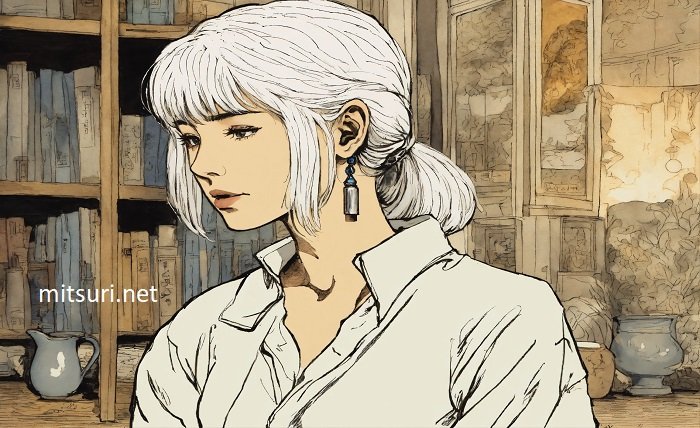Introduction
Japanese comics called josei manga, which are aimed at adult women, provide a diverse range of stories that explore the intricacies of relationships, adult life, and personal development. In contrast to shoujo manga, which targets adolescent girls with themes of romanticism and idealized relationships, josei manga depicts characters overcoming the trials of maturity in a more sophisticated and nuanced way. J-pop manga has established a distinct market for itself in the manga industry thanks to its wide variety of genres and intensely emotive storytelling, drawing in fans from all over the world. This genre tackles universal issues that cut across cultural boundaries in addition to reflecting shifting views on gender roles and societal changes.
What is Josei Manga
The term “joei manga” describes a subgenre of Japanese comics meant exclusively for adult women. Josho manga addresses more mature issues and narratives that appeal to adult female readers, in contrast to shoujo manga, which is aimed at teenage girls. In order to appeal to an audience seeking sophisticated storytelling and intricate character development, this genre frequently explores realistic depictions of relationships, professional obstacles, and personal development.
History and Evolution of Josei Manga
The emergence of comics targeted at older female audiences in the late 1960s and early 1970s is when josei manga first came into being. From its origins in romance and household themes, josei manga expanded to include a larger spectrum of genres, including slice of life, drama, and even science fiction. This evolution was first influenced by the shifting social dynamics in Japan. Early on in the genre’s evolution, authors like Kyoko Okazaki and Moto Hagio were influential in creating the broad and varied category of manga.
Themes in Josei Manga
Adult women find resonance in the wide range of subjects explored in Josei manga. Romance, frequently with a more responsible and realistic representation of relationships, professional difficulties like managing the job or following one’s goals, and personal development by self-examination and overcoming hardship are common themes. As opposed to shoujo manga, which could be more romantically oriented, josei manga delves more deeply into adult realities and emotional complexity.
Art Style and Visual Tropes
Josei manga is known for its intricate character expressions and realistically rendered environments. Characters from josei manga frequently have more realistic proportions and facial expressions that portray subtle emotions, in contrast to the more exaggerated characteristics seen in shounen manga. Subtle facial expressions and gestures are examples of visual tropes in josei manga, which enrich the storytelling and add to the emotionally charged and engrossing stories.
Popular Josei Manga Series
Some of the most well-known josei manga series are “Honey and Clover” by Chika Umino, which delves into the intricacies of friendship and artistic ambition, and “Nodame Cantabile” by Tomoko Ninomiya, which is renowned for its fusion of music, romance, and personal development. Readers find these series to be particularly compelling because to their cross-cultural narratives, relatable themes, and well-developed characters.
Impact of Josei Manga on Popular Culture
Josei manga has greatly influenced popular culture both domestically and abroad. Its subtle depiction of adult relationships and common difficulties has impacted live-action dramas and movies in addition to manga and anime adaptions. The universal themes of love, identity, and societal expectations that josei manga tackles have helped it appeal to a wide range of readers and spur imaginative adaptations on a variety of mediums.
Josei Manga vs. Western Comics
Japanese manga frequently varies from Western comics aimed at female readers in terms of narrative complexity and emotional storytelling. While superhero stories and graphic book forms may be the main focus of Western comics, mature female consumers of josei manga are drawn to a wider variety of genres and issues. Cultural differences also come into play, as josei manga often addresses relationships and society norms from a uniquely Japanese viewpoint.
Notable Josei Manga Publishers
Leading Japanese publishers of josei manga are Shogakukan, Kodansha, and Shueisha; these companies are renowned for their varied catalogs that appeal to adult female consumers. These publishers have played a significant role in advancing josei manga and providing assistance to both seasoned authors and up-and-coming talent. Their efforts have influenced the genre’s development and increased its popularity on a national and worldwide scale.
Conclusion
To sum up, josei manga is evidence of the richness and variety of narrative found in the manga genre. With its thoughtful stories, nuanced characters, and realistic depictions of adult life, josei manga has captured readers’ attention from its inception in the late 20th century and continues to do so now as a major force in global pop culture. The genre appears to have a bright future ahead of it given its capacity to expand its audience and adjust to modern media. Through its engrossing stories, josei manga, which tackle topics such as love and work, friendship and self-discovery, or societal expectations and personal fulfillment, continues to be an essential component of manga culture, providing readers worldwide with an insight into the complexities of the human condition.
FAQ
What age group reads josei manga?
Adult women in their late teens and older are the main audience for josei manga. While shoujo manga is geared toward a younger readership, josei manga delves into topics and tales that speak to readers who are grappling with the difficulties and complexities of maturity.
How does josei manga differ from shoujo manga?
Shoujo manga and josei manga are not the same in a few aspects. While josei manga explores more mature subjects including adult relationships, career struggles, and personal growth, shoujo manga concentrates on the romantic and emotional experiences of young girls.


